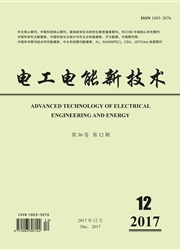

 中文摘要:
中文摘要:
为提高氢氧等离子体合成H2O2技术的能量效率,通过分析放电过程的反应器能效及电源能量注入效率,确定了影响合成总能效的主要因素。考察了反应器电极间距、电源放电频率及注入功率对反应器能效和电源能量注入效率的影响。发现减小电极间距、提高放电频率和注入功率有利于提高反应器能效,但不利于提高电源能量注入效率。本研究中可以得到150gH2O2/kWh的反应器能效,但由于较低的电源能量注入效率,致使合成H2O2的总能效不超过9gH2O2/kWh。因此,提高等离子体法合成H2O2过程的总能效,不仅需要设计高能效的等离子体反应器,还需为反应器负载开发适配的电源,而后者是提升该技术能量效率的关键。
 英文摘要:
英文摘要:
To improve the energy efficiency of the direct synthesis of H2O2 from H2 and O2 by non-equilibrium plasma, the influences of discharge gap, discharge frequency and input power on the reactor energy efficiency and the energy transfer efficiency of the power supply were investigated. The increase of the discharge frequency and the input power, and the reduction of the discharge gap of the reactor can improve the reactor energy efficiency, but will lead to the decline of the energy transfer efficiency of the power supply. The reactor energy efficiency reached 150 gH2O2/kWh in this study. Nevertheless, due to the relatively low energy transfer efficiency of the power supply, the total energy efficiency of H2 O2 synthesis was less than 9 gH2O2/kWh. So to improve the total energy efficiency for the direct synthesis of H2O2 by nonequilibrium plasma, the design of highly efficient DBD reactor and the development of matchable power supply for the reactor are both necessary, and the latter is more important.
 同期刊论文项目
同期刊论文项目
 同项目期刊论文
同项目期刊论文
 期刊信息
期刊信息
